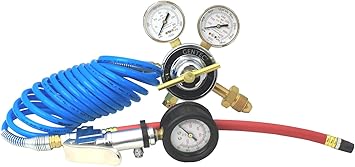BLUF: This is not a thread to argue whether putting straight nitrogen in tires works any better than straight air.
Has anyone made the effort to get a nitrogen tank with the necessary attachments to fill/refill their vehicle tires at home? If so, any idea what size tank to take care of three vehicles (car, truck and bike)? My brother had one years ago when he and a buddy were into drag racing, but he couldn't remember much about it.
Has anyone made the effort to get a nitrogen tank with the necessary attachments to fill/refill their vehicle tires at home? If so, any idea what size tank to take care of three vehicles (car, truck and bike)? My brother had one years ago when he and a buddy were into drag racing, but he couldn't remember much about it.





